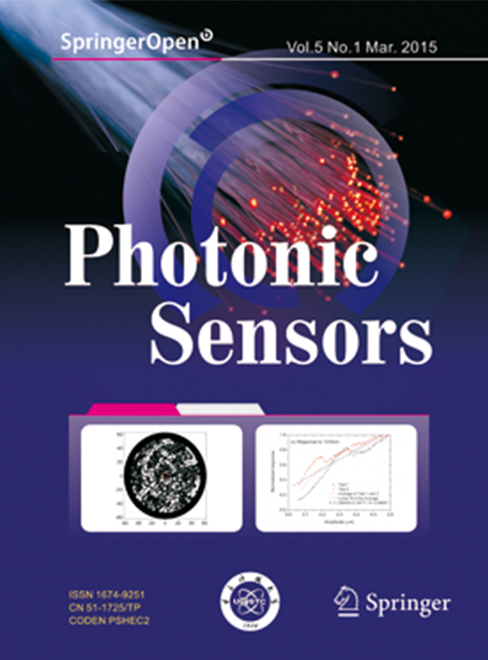 View fulltext
View fulltext
Silica-based fiber tips are used in a variety of spectroscopic, micro- or nano-scopic optical sensor applications and photonic micro-devices. The miniaturization of optical sensor systems and the technical implementation using optical fibers can provide new sensor designs with improved properties and functionality for new applications. The selective-etching of specifically doped silica fibers is a promising method in order to form complex photonic micro structures at the end or within fibers such as tips and cavities in various shapes useful for the all-fiber sensor and imaging applications. In the present study, we investigated the preparation of geometrically predefined, nanoscaled fiber tips by taking advantage of the dopant concentration profiles of highly doped step-index fibers. For this purpose, a gas phase etching process using hydrofluoric acid (HF) vapor was applied. The shaping of the fiber tips was based on very different etching rates as a result of the doping characteristics of specific optical fibers. Technological studies on the influence of the etching gas atmosphere on the temporal tip shaping and the final geometry were performed using undoped and doped silica fibers. The influence of the doping characteristics was investigated in phosphorus-, germanium-, fluorine- and boron-doped glass fibers. Narrow exposed as well as protected internal fiber tips in various shapes and tip radiuses down to less than 15 nm were achieved and characterized geometrically and topologically. For investigations into surface plasmon resonance effects, the fiber tips were coated with nanometer-sized silver layers by means of vapour deposition and finally subjected to an annealing treatment.
In this paper, we describe the structural health monitoring of several structures, with different geometry, materials and behaviors, using optical fiber sensors. Those studies aimed to demonstrate the feasibility of such technologies in structural health monitoring, with all the advantages inherent to the optical fiber technology.
An interferometer based on a D-shape chaotic optical fiber for measurement of multiparameters was proposed. The sensing structure relied on a D-shape fiber section spliced in between two singlemode fibers and interrogated in transmission. The optical spectrum was composed by multiple interference loss peaks, which were sensitive to the refractive index, temperature and strain - maximum sensitivities of 95.2 nm/RIU, 10.5 pm/℃ and -3.51 pm/με, respectively, could be achieved.
The “lab-on-fiber” concept envisions novel and highly functionalized technological platforms completely integrated in a single optical fiber that would allow the development of advanced devices, components and sub-systems to be incorporated in modern optical systems for communication and sensing applications. The realization of integrated optical fiber devices requires that several structures and materials at nano- and micro-scale are constructed, embedded and connected all together to provide the necessary physical connections and light-matter interactions. This paper reviews the strategies, the main achievements and related devices in the lab-on-fiber roadmap discussing perspectives and challenges that lie ahead.
Fiber optic sensors have a set of properties that make them very attractive in biomechanics. However, they remain unknown to many who work in the field. Some possible causes are scarce information, few research groups using them in a routine basis, and even fewer companies offering turnkey and affordable solutions. Nevertheless, as optical fibers revolutionize the way of carrying data in telecommunications, a similar trend is detectable in the world of sensing. The present review aims to describe the most relevant contributions of fiber sensing in biomechanics since their introduction, from 1960s to the present, focusing on intensity-based configurations. An effort has been made to identify key researchers, research and development (R&D) groups and main applications.
A brief review on biconical tapered fiber sensors for biosensing applications is presented. A variety of configurations and formats of this sensor have been devised for label free biosensing based on measuring small refractive index changes. The biconical nonadiabatic tapered optical fiber offers a number of favorable properties for optical sensing, which have been exploited in several biosensing applications, including cell, protein, and DNA sensors. The types of these sensors present a low-cost fiber biosensor featuring a miniature sensing probe, label-free direct detection, and high sensitivity.
The ability to operate despite failure will become increasingly important as the use of optical sensor networks grows, and the amount of sensing information to be handled by a sensor network is increasing, especially for safety and security applications. In this review, the four categories of protection to allow service to be reestablished after a failure (dedicated/shared and line/path) are thoroughly discussed. This paper also presents an overview of the most representative robust fiber-optic sensor systems, discussing their schemes, pros and cons.








